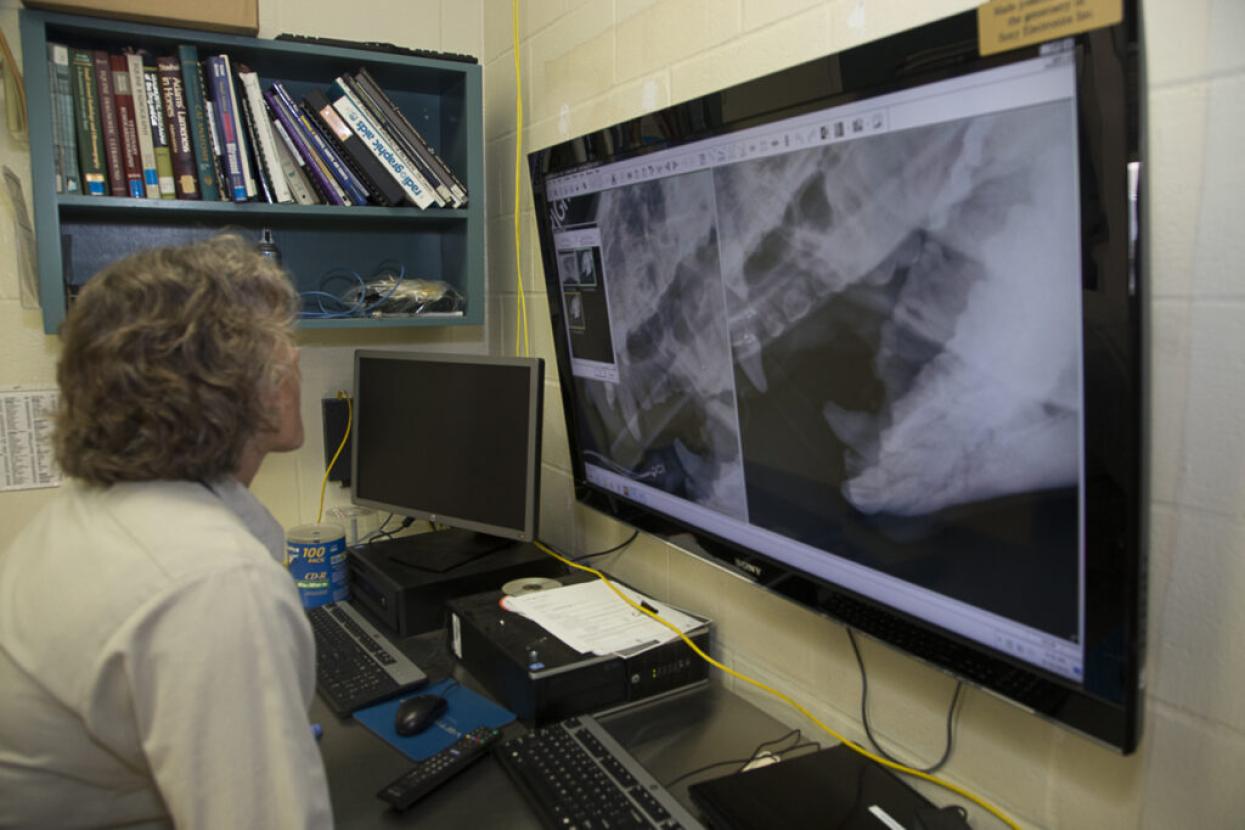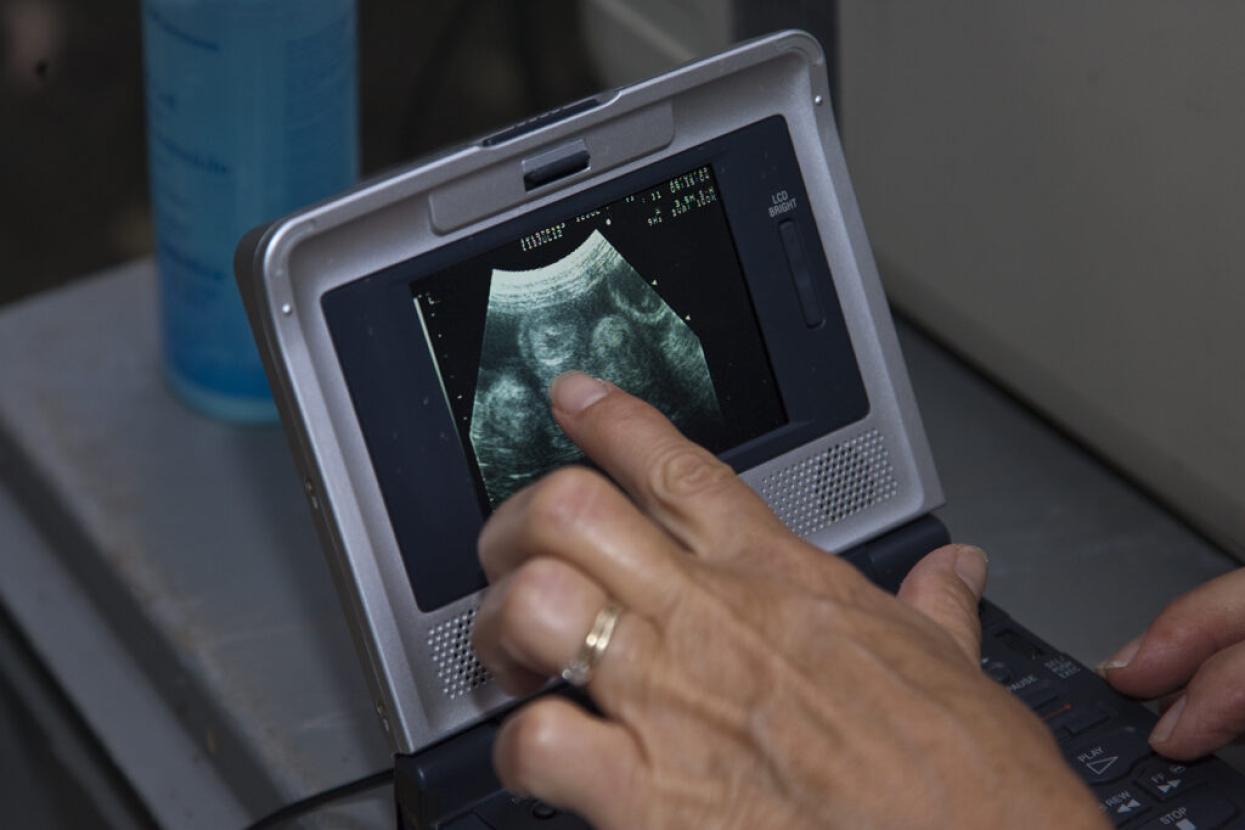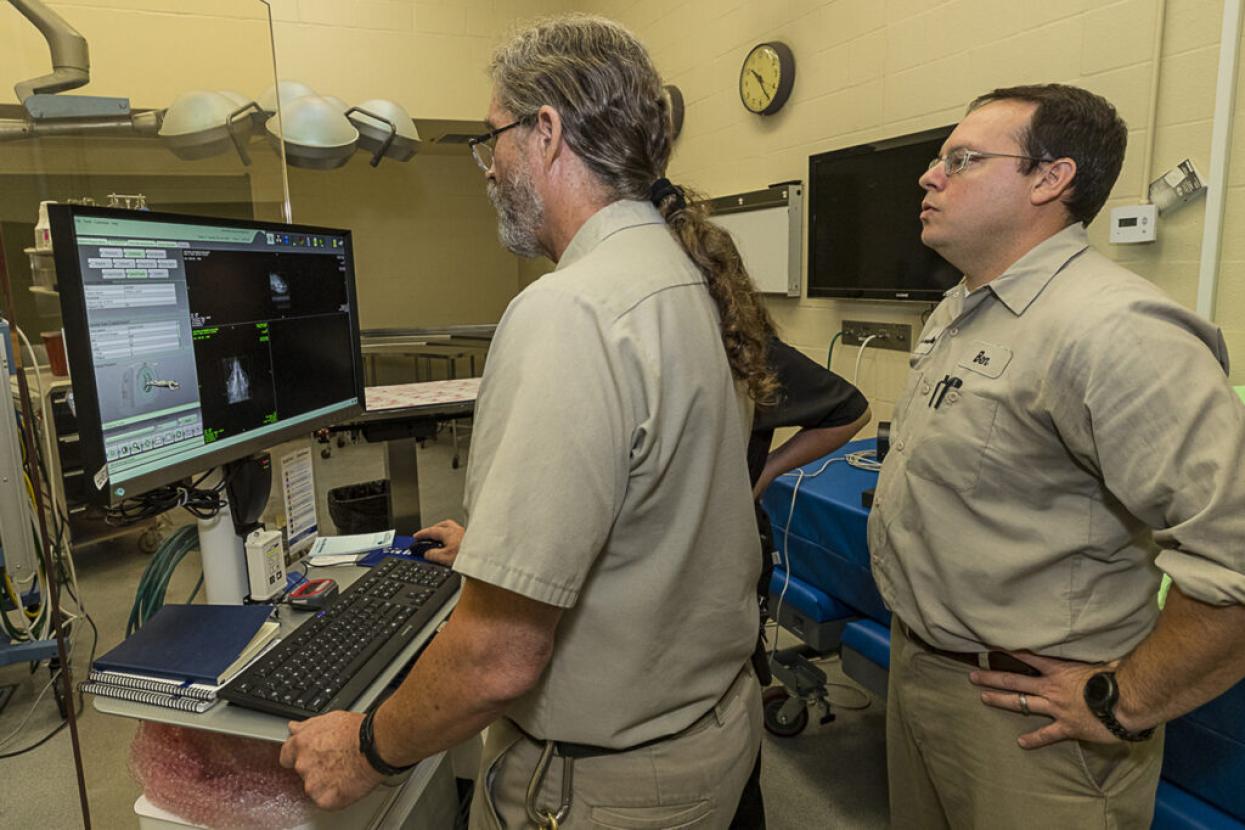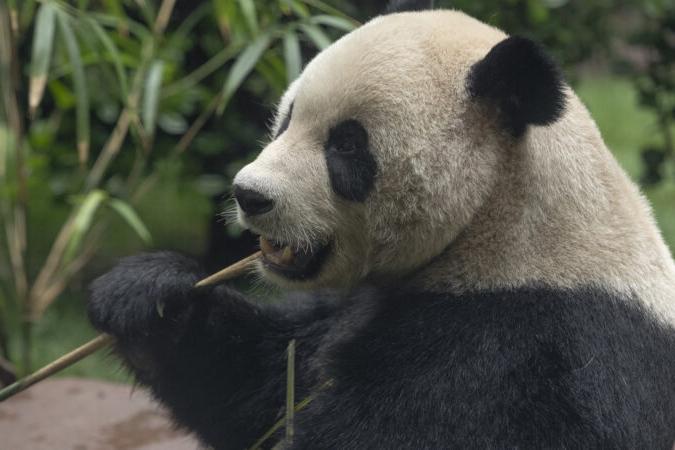
Focusing on Giant Panda Wellness
Giant pandas are different from other bears—and so are their health challenges.
They eat bamboo instead of meat. However, the relatively low nutritional content of bamboo means they have to eat a lot of it, and eat it all day long, to get the calories they need.
Years of eating bamboo can often wear down panda teeth, causing dental disease that can prevent them from getting needed nutrition.
Between the Zoo and Safari Park, we grow 135 varieties of bamboo, including everything the pandas we care for need to thrive.
Their mating season is extremely short, and females are only receptive to breeding during a 24- to 72-hour window once a year. This short window of opportunity means it’s critical that normally solitary pandas pick up on the scent and acoustic signals that male and females emit during the breeding season to attract a mate.
Mothers often give birth to twins, but they are usually only equipped to raise one cub each season—unless they get a little help.
For those reasons and many others, our experienced Wildlife Health team is crucial to the success of giant panda conservation efforts worldwide. Wildlife Health not only includes veterinarians, but also clinical registered veterinary technicians and members of our Disease Investigations, Nutrition, and Clinical Laboratory teams who all work together collaboratively.
Throughout the San Diego Zoo and the San Diego Zoo Safari Park, Wildlife Health teams operate hand-in-hand with wildlife care specialists to provide individually optimized diet plans, medical care, and preventive medicine; diagnose illnesses; and develop regimens for patient recovery and rehabilitation for post-operative and geriatric wildlife. Pandas are no exception!
A History of Collaborative Achievements
During our 30 years of collaborative work in giant panda conservation with our friends and partners at China Wildlife Conservation Association, we have learned a great deal about giant panda health and care, reproduction, bamboo and nutrition, maternal care, scent communication, auditory capacity, and more.
Milestones in veterinary care for giant pandas made during our previous years of collaboration include scientific advancements in pregnancy detection, understanding of how pandas communicate during breeding season, assisted reproduction techniques, and developing a milk formula and other neonatal conservation techniques with our partners that increased survival rates of nursery-reared cubs from less than 10 to over 90 percent.
Dental exams and care are essential to giant pandas’ overall health.
Together we made meaningful contributions that have furthered our understanding of giant panda habitat and nutritional needs, and how protected areas contribute to panda conservation, as well as how climate change threatens recovery.
Expertise in Action
We are now putting those insights to work following the arrival of a new generation of giant pandas at the San Diego Zoo. In the newest phase of our collaborative conservation efforts with our partners in China, our proactive care will help further advance techniques to help pandas everywhere thrive.
Ultrasound evaluations can provide valuable information for the Wildlife Health team.
Important and routine health assessments will be made noninvasively right in the pandas’ habitat. The wildlife care team is working to build positive relationships with the giant pandas, which will help them learn how to voluntarily participate in their health care. Sometimes this care is delivered without them even knowing it, such as collecting daily weights. Other times, the pandas will be asked to actively participate, such as during blood pressure measurements, blood sample collections, and ultrasound evaluations. With their specific dietary needs—eating up to 40 pounds a day of fibrous bamboo—dental wear is common as pandas age, and dental health is one of the most important aspects of their routine veterinary exams. We have also integrated computed tomography (CT) scans into our routine practice, which allows for early, proactive response and treatment of any potential health challenges.
CT scans help Wildlife Health team members respond proactively to diagnose and treat a variety of potential health issues.
At the Zoo, Xin Bao and Yun Chuan will help guests learn more about our ongoing collaborative conservation efforts for giant pandas and their bamboo forest ecosystems while also furthering our understanding of this unique and much-loved species so we can help them thrive in native habitats.
As we look ahead to this new chapter, it’s important to better understand both the species and the challenges they still face, including the impacts of emerging diseases, habitat fragmentation, and the impact of climate change. While our conservation work with our partners in China will be focused on pandas, it will also positively impact other species that share their forests through environmental assessments, disease surveys, and other key studies.
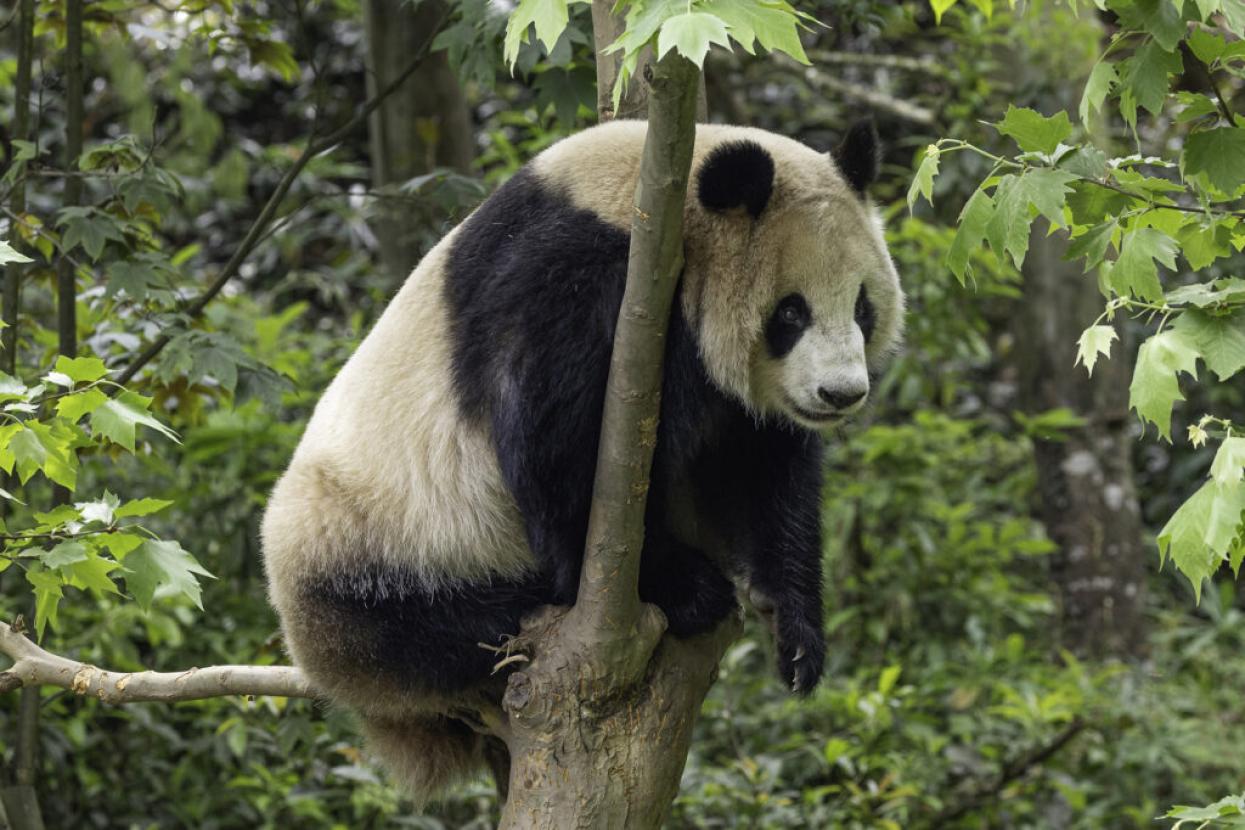
Our conservation work with our partners in China focuses on pandas, and because they are a keystone species, these efforts will also positively impact the health of wildlife that share their forest ecosystem.
In the 1990s, giant pandas faced extinction, and little was known about their specific health and habitat needs. Today, thanks to 30 years of collaborative conservation efforts, the future looks much brighter for pandas and the places they call home. Dr. Megan Owen, vice president of Conservation Science for San Diego Zoo Wildlife Alliance, has been working with giant pandas since the early years of this friendship and partnership. She’s excited about the next decade of collaboration, and what our continued work may mean for advances in panda health and species conservation. “Our partnership over the decades has served as a powerful example of how—when we work together—we can achieve what was once thought to be impossible.”
For the latest information on how and when to visit giant pandas at the San Diego Zoo, check out our Giant Panda FAQs. Zoo guests can secure a complimentary Giant Panda Timed Ticket or make reservations for a premium Early Morning with Pandas Walking Tour.


